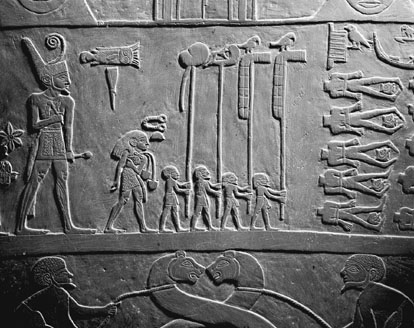

 | Page 458 |  |
the century had revealed tombs attributed to the first pharaohs of the Dynastic period as well as the presence of extensive Predynastic cemeteries. The systematic investigation of the Abydos Predynastic cemeteries by Günter Dreyer during the 1980s and 1990s fully defined the scope of the Predynastic cemeteries that develop from north (Cemetery U dating to Nagada I through early Nagada III) to south (Cemetery B dating to the end of the Nagada III period). A marked growth in size and contents of certain tombs occurs with the beginning of the Nagada III period. The excavation of Tomb U-J, a multichambered tomb that still preserved some of its original contents, is likely the burial of a proto-king at the beginning of the Nagada III period. Significantly, Tomb U-J contained objects with early use of hieroglyphic signs for recordkeeping (including small inscribed dockets and ink labels), demonstrating the use of writing was well advanced already at the end of Nagada II and beginning of Nagada III, ca. 3250 b.c.

A detail of the Narmer Palette, ca. 3100 B.C., depicting a triumphal procession of King Menes, wearing the red crown of Lower Egypt at the temple of Horus, inspecting defeated enemies
(The Art Archive/Egyptian Museum Cairo/Dagli Orti [A])
The second half of the Nagada III period (Nagada IIIb, ca. 3150–3050 b.c.) is often called by archaeologists “Dynasty 0,” referring to the fact that many of the central features of Dynastic Egypt are fully documented during this terminal phase of the Predynastic. A series of kings’ names along with emergence of characteristic iconography of Pharaonic kingship characterize this period. From later Nagada III/Dynasty 0 we have a distinctive class of objects that suggest the final stages of state formation. These are commemorative stone maceheads and palettes (large decorated versions of the mudstone palettes and maceheads of the earlier phases of the Nagada culture). A cache of such commemorative stone palettes and maceheads
 |  |